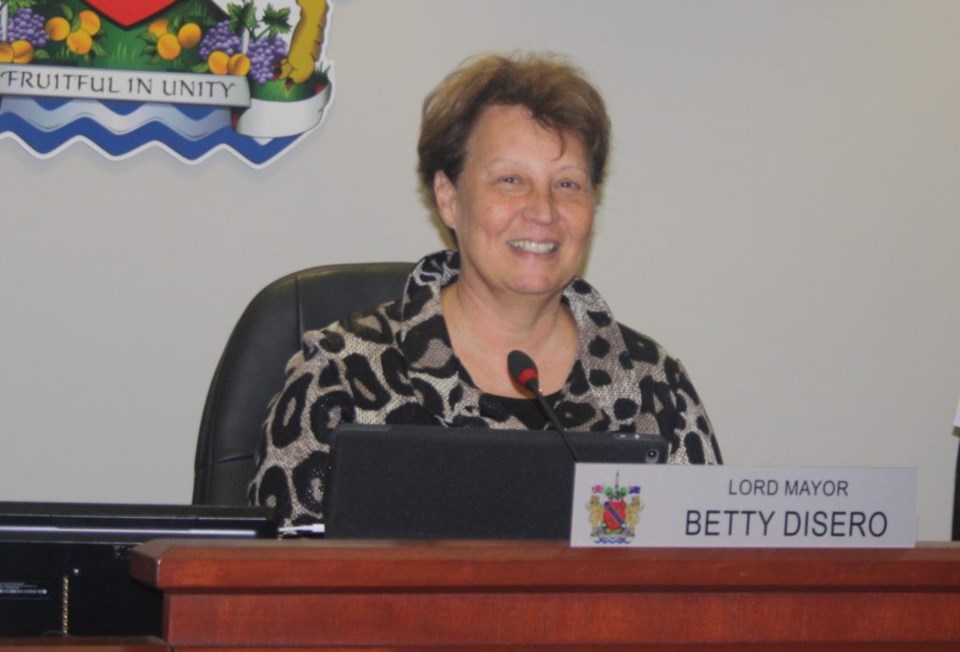
Lord Mayor Betty Disero couldn’t have been happier last Friday morning to learn the threat of amalgamation is over.
She’s delighted with the news, but not surprised.
From her discussions during this summer’s Association of Municipalities of Ontario conference, she said she was hearing from her contacts “what they’d been hearing,” that the provincial government had lost its appetitive for forcing amalgamation on municipalities.
”Of course anything you hear is speculative, but I was hopeful.”
While she thought Premier Doug Ford might be looking for ways to reduce the number of municipal councillors, “I didn’t see him doing something drastic as far as service delivery. I thought he might put a panel together, and a process in place for a disentanglement exercise.”
She points out the Province, from its earliest discussions, never talked about amalgamation, it was always about a regional review. That got interpreted as amalgamation, she says.
There might still be some benefit to such a disentanglement exercise in Niagara, Disero said, to look at who does what. The mayors have met to talk about that, “but there is always a fear people will lose their jobs.” With the provincial threat receding, she says, “this will give people some job security.”
It also gives Niagara an opportunity to review its service delivery, “to ensure we are not duplicating services,” says Disero.
“It makes no sense to me that we’re both providing some of the same services. We’ve got the Region and the Town doing snow removal, for example. Why don’t we have one level doing the whole thing?”
In the letter she sent out Friday, Disero said maintaining high service levels has always been a priority for the Town. “I am confident that with the support of the provincial government, and in partnership with the Niagara Region, council and staff will continue to work with other local area municipalities to streamline services to not only maintain service levels, but to enhance them.”
She said she is “pleased that Niagara-on-the-Lake residents will continue to have a strong voice in this community and be well represented by our locally elected officials.”
With the threat of amalgamation behind us, she said, “I’m excited to move forward with our Strategic Plan initiatives and look forward to working with staff and council to further our culture of customer service excellence.”
Regional councillor, Gary Zalepa said he is pleased and excited the threat of amalgamation of Niagara municipalities has been removed.
He, like other residents who hoped to preserve the identity of their community, feared that could be “wiped out” with amalgamation, he said.
“This is an interesting time. It’s a good opportunity to have a really good look at ways to improve governance. We’ve got a good feeling now of what people are open to considering and what the public really wants.”
He said if he were to consider forming a regional government today, it would be different from what exists. “This is an opportunity to take what’s best about regional government and make it better,” he said, continuing the momentum that was created during discussions held as part of the provincial review.
“There is an opportunity to design a different business model.”
Locally-elected people tend to make the best decisions for their municipality, he said. “We can create a governance model that works that way. Inefficiencies have evolved over the years, and I think we can make adjustments and do things better.”
Steve Clark, Minister of Municipal Affairs and Housing, said in his announcement Friday that during his government’s review of eight regional governments, more than 8,500 submissions were received, and the two special advisors, Michael Fenn and Ken Seiling, attended nine sessions to hear from individuals and organizations on how to improve their local governments.
He said the provincial government would not be forcing amalgamation of municipalities or imposing cuts on municipal councils.
Throughout the review, the government heard that local communities should decide what is best for them in terms of government, decision-making, and service delivery, said a provincial news release.
“After careful consideration of the feedback we heard through the course of the review, our government stands firm in its commitment to partnering with municipalities without pursuing a top-down approach. We will provide municipalities with the resources to support local decision-making,” a news release said.
Clark said his government is committed to “helping and empowering municipalities to become more efficient and effective, so they can make every dollar count.”
The announcement said the Province is providing up to $143 million to municipalities, intended to lower costs and improve services for locals in the long term.
Clark said the investment is to support “municipal transformation efforts,” to make sure they are delivering efficient, effective and modern services “that meet the unique needs of their residents.”
Through the Ontario Municipal Partnership Fund, Niagara-on-the-Lake will receive $349,800 in 2020.
In 2019, NOTL received $411,500 from the OMPF.
Clark also announced an additional $125 million in new funding to help municipalities review the way they deliver services.